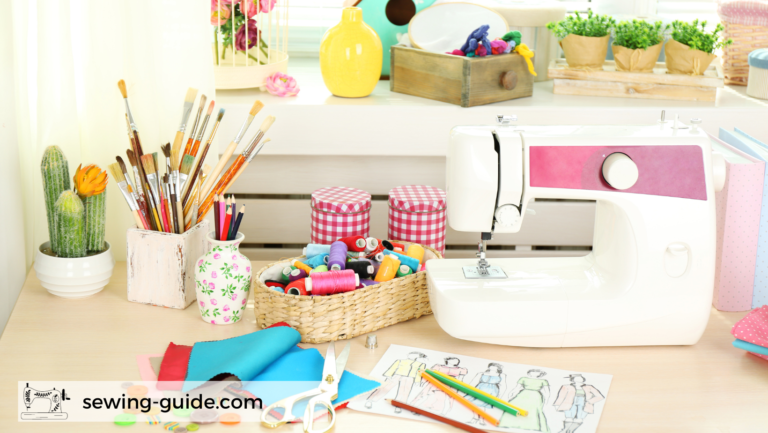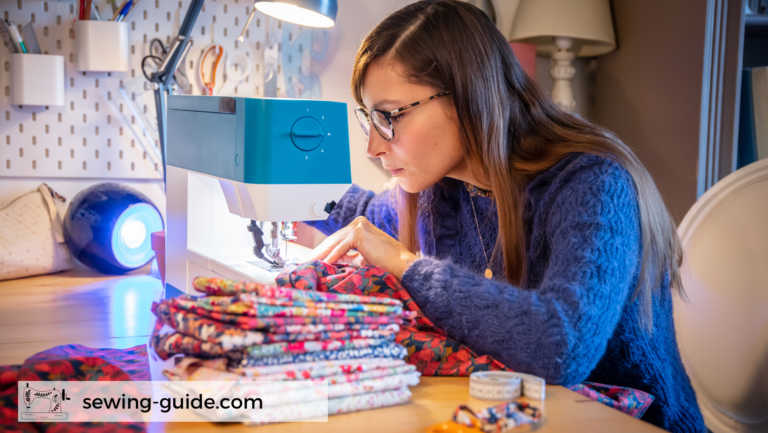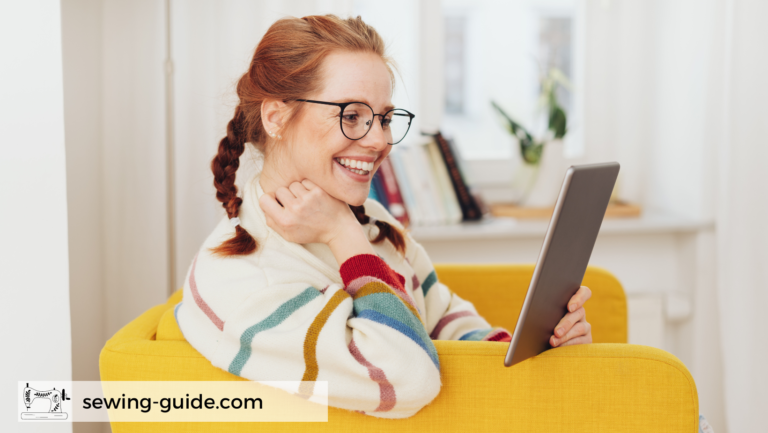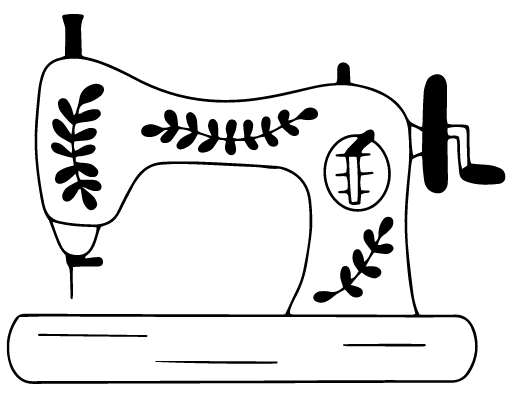

Looking for sewing patterns, tips and tutorials? We have you covered. You can find sewing patterns for clothing, home décor, gifts and more.

Whether your a beginner to sewing, or looking to improve your sewing skills, you can find a range of online sewing classes and patterns with our Learn to Sew section.

Never run out of things to sew! Get the latest sewing patterns, tips, and tutorials straight to your inbox. Sign up here to receive our monthly newsletter.
New to sewing? Read along to start your sewing journey.
Welcome to the wonderful world of sewing!
Sewing is lots of fun. You can make clothing, toys, home décor items, and gifts. At Sewing Guide, we are here for all levels of sewers, from complete beginners to the advanced. We have designed this website to provide sewing enthusiasts with everything they need. You can find step-by-step tutorials, patterns, storage tips and more.
Below, is our simple starter guide for beginners interested in learning how to sew. We will cover the basics for getting started, as well as the foundational sewing stitches you will need to get started. So grab a cup of tea (or your preferred beverage) and lets get ready to sew!
Essential Sewing Supplies
Whether you’re new to sewing or looking to refresh your sewing stash, these must-have sewing tools should be part of every beginner’s sewing kit.
The basics:
- Sewing Machine: Look for a beginner friendly sewing machine that has essential features like straight, zigzag and 4 step buttonhole.
- Thread: A variety of thread colors in both polyester and cotton will cover most of your sewing needs. Make sure to match the thread color to your fabric for a polished finish.
- Needles: Universal needles and ballpoint needles are great for beginners. Once you start working with different fabric & project types you will want to upgrade your needles to include stretch, leather, quilting etc.
Measuring an Cutting:
- Measuring Tape: a measuring tape is an indispensable tool for accurate measurements when cutting fabric and taking body measurements when sewing clothing.
- Fabric Scissors: High-quality fabric scissors make a world of difference when cutting out fabric. Sharp blades make cutting fabric a breeze.
- Paper Scissors: You will want a different pair of scissors to cut out patterns. These can just be standard household scissors. Paper will blunt your sewing scissors and make cutting out fabric difficult.
- Seam Ripper: Let’s face it mistakes happen. A seam ripper is essential for undoing stitches without damaging your fabric.
Marking and Pinning:
- Pins: Pins will help to keep your fabric layers together while you cut. While sewing pins are used to help hold the fabric edges together while you sew. Tip: make sure you remove the pins as you sew. Sewing over a pin can cause your sewing machine needle to break.
- Chalk or Fabric Markers: These are used to mark your fabric for pattern placement, darts, or other design elements.
- Pattern weights (optional): Pattern weights can be used instead of pins to hold your pattern in place while you cut out your fabric. Any heavy object, even washers, can be used to hold your pattern in place.
Pressing and Finishing:
- Iron and Ironing Board: Pressing your fabric and seams is crucial for high quality finishes to your sewing projects.
- Iron Cleaner: Maintain your iron by cleaning it regularly to avoid transferring residue onto your fabric.
- Pressing Cloth: Protect delicate fabrics from direct heat and prevent shine with a pressing cloth.
Storage and Organization:
- Storage Containers: Keep your sewing supplies organized with clear plastic bins or a sewing box with compartments.
- Thread Organizer: Neatly organize and store your spools of thread for easy access.
Additional Supplies:
- Fabric: Start with some basic fabrics like polyester and cotton for practice.
- Patterns: Find some beginner friendly tutorials and patterns to start practicing your new skills.
Whether you’re dreaming of creating unique home décor, sewing beautiful quilts, or dreaming of creating your own wardrobe, having the right tools at your fingertips will make the process smoother and more enjoyable.
5 Basic Sewing Stitches
These five stitches are the basic stiches you will need to know to complete most sewing projects.
- Straight Stitch: The straight stitch is the most basic and commonly used stitch in sewing. It forms a straight line of stitches.
- Zigzag Stitch: The zigzag stitch creates a zigzag pattern and is versatile for finishing raw edges, sewing stretchy fabrics, and creating decorative designs.
- Backstitch: The backstitch is used at the beginning and end of a seam to secure it. It prevents stitches from unravelling.
- Gathering Stitch: The gathering stitch is used to create even and controlled gathers or pleats in fabric.
- Topstitching: Topstitching is when you sew a visible row of stitching to the right side of the fabric, typically along the edges, seams, or hems of a project.
You can find a glossary of common sewing terms here.
You can learn how to sew these basic stitches as part of our learn to sew series here.
Don’t forget to visit our Learn to Sew page here for online sewing classes and patterns.
Happy Sewing!
